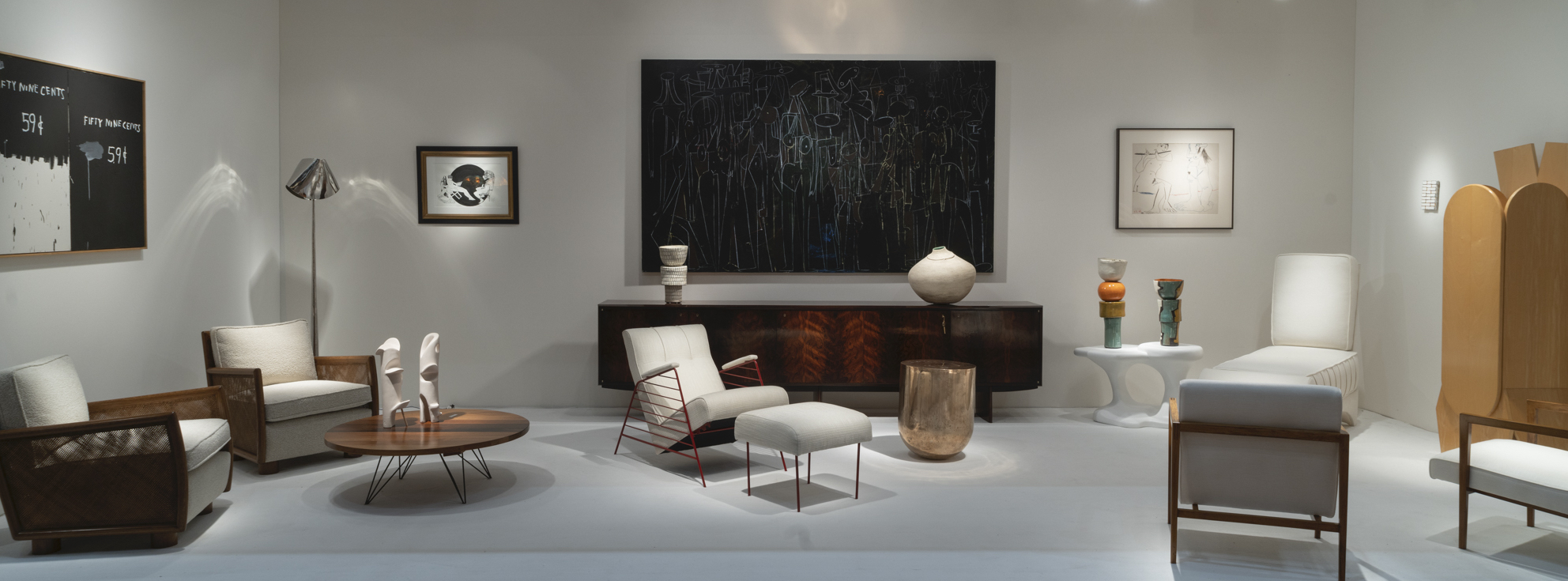After a two year hiatus, Salon Art + Design heralded the return of the design fair this past week in New York. Elana Castle explores the themes that emerged, reinforcing the show’s undeniable appeal and global relevance.
Salon Art + Design returned for its 10th anniversary at the Park Avenue Armory in New York City this week with renewed vigor. Until three months ago, with international travel restrictions firmly in place, there was considerable doubt as to whether European dealers would be able to travel to New York. Fortunately, last-minute border openings – and exceptional leadership from the salon’s executive director Jill Bokor – meant that the show could, quite literally, go on.
Given the salon’s forced hiatus last year and a strong desire for connection and in-situ acquisition opportunities among the design fraternity, a group of 11 European and 36 American dealers presented a sophisticated mix of vintage and contemporary furniture alongside fine and decorative art. The salon is distinguished for its interest in creating interior environments that don’t necessarily favor one genre or style of design or another; and as a result, the salon is considered the only international fair of this caliber to present art and design from antiquity through to the current day.

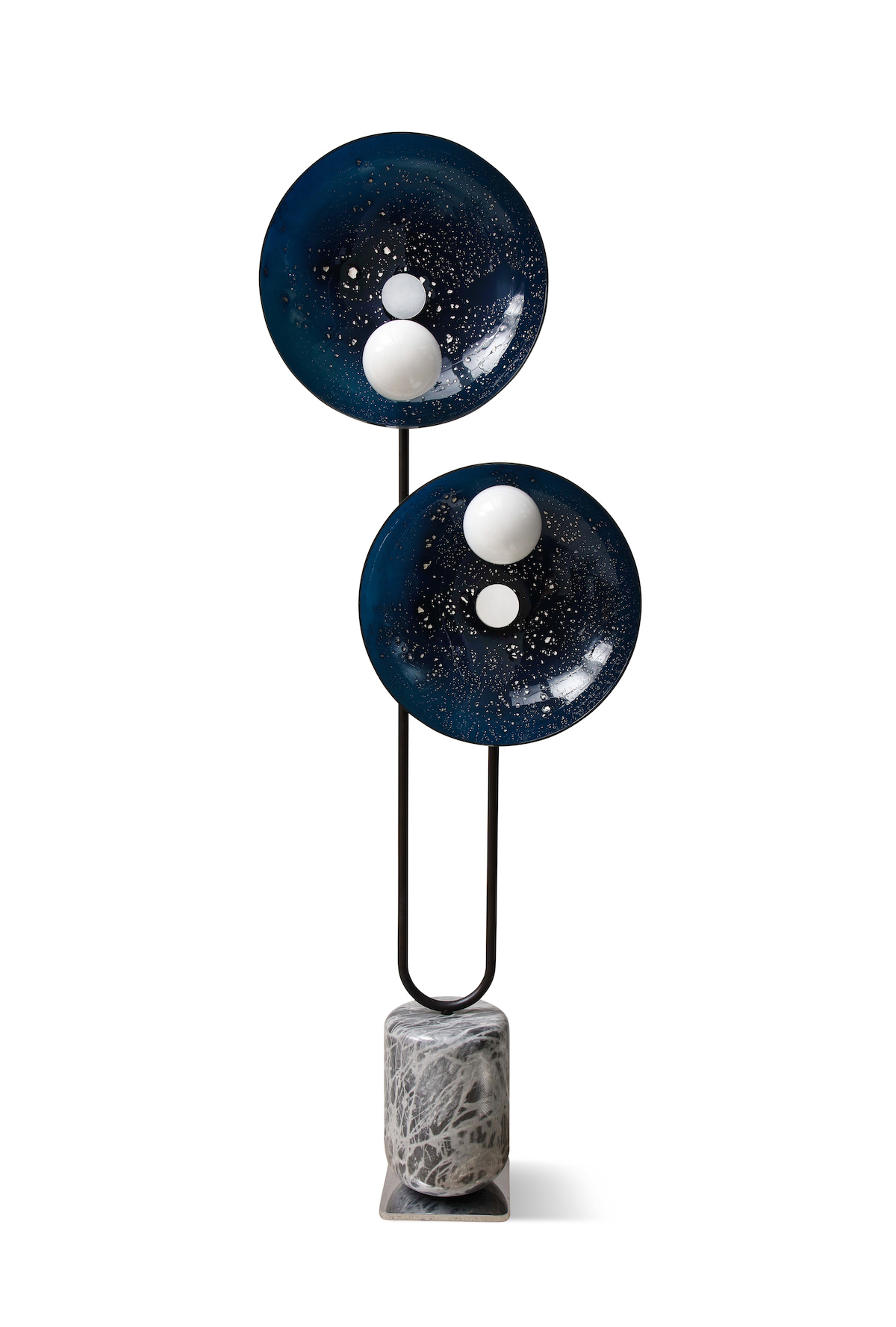

The collective repertoire was as immersive as ever, featuring rare pieces like a bronze dragon and phoenix tray from the 18th-century Japanese Edo period, presented by sartorial gallerist Michael Goedhuis, to latest releases from established trendsetters like Hostler Burrows and Friedman Benda. Despite presenting a slightly “leaner and meaner” event, the resultant effect was evident.
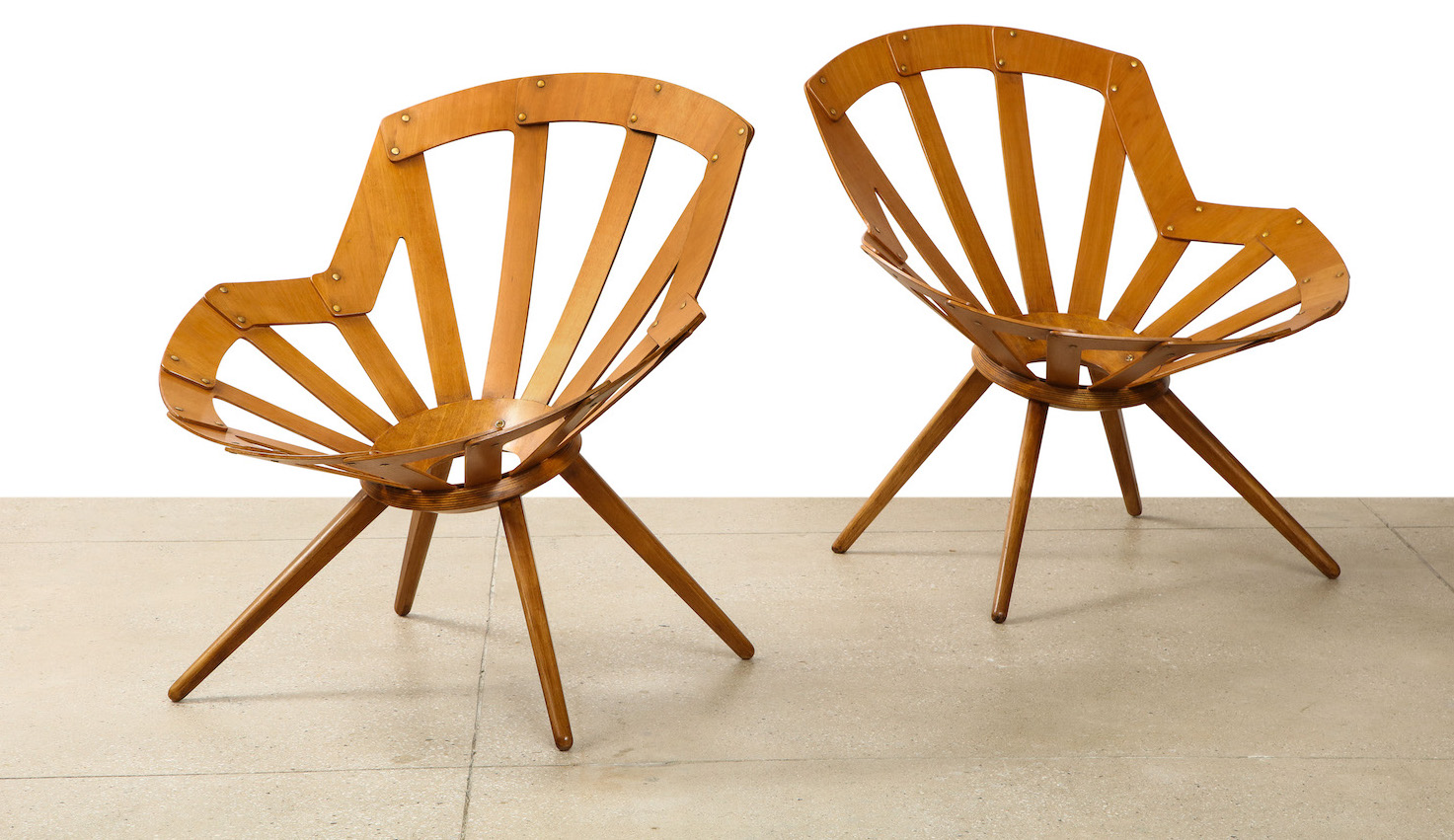

“We experienced tremendous enthusiasm and sales during the Salon Fair,” commented Paul Donzella from Gallery Donzella. “People have been very focused on their homes, and we have benefited greatly as a result. We are most grateful for that.”
Guillaume Excoffier from collectible design gallery Gabriel et Guillaume (pictured at top) concurred: “The market is extremely strong right now. We feel a lot of confidence and excitement among collectors, after more than a year of continuous lockdowns. Collectors are definitely looking for exceptional pieces both in design and art, and get them fast. We sold half of the booth in the first two days.”
While the exhibitors displayed their characteristic individuality, a number of themes and trends emerged and took on new meaning at this year’s fair. Here are the key ones you need to know:
Increased demand for design classics
This year saw a substantial representation of 19th and 20th century furniture and objects from design greats like Charlotte Perriand, Paul Evans and Pierre Jeanneret. Gallery Dobrinka Salzman presented a chronological iteration of Jean Prouve’s Standard Chairs, and stated: “With each variant he has created, he improved the design and functionality.”
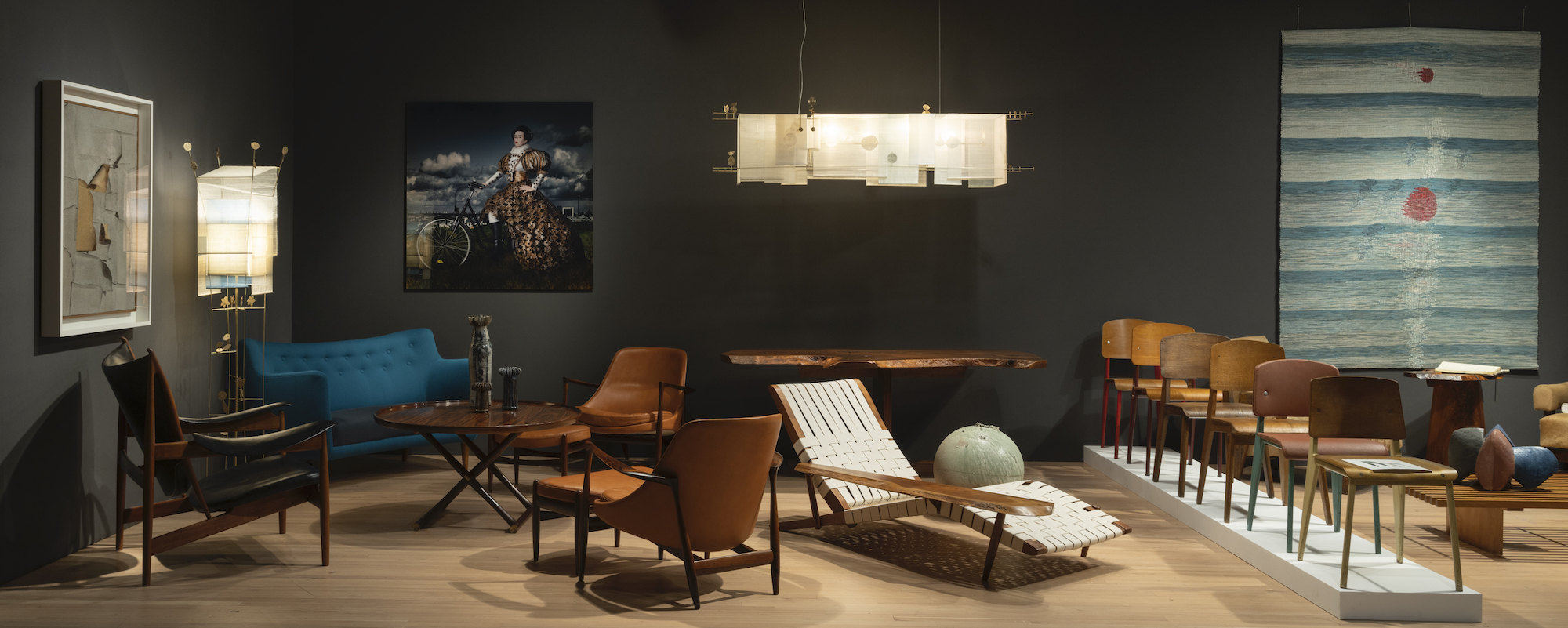
It was accented on the opposite end of their booth with a rare, electric blue Finn Juhl sofa and a live-edge George Nakashima Minguren dining table. Magen H Gallery presented a number of extraordinary French modern pieces with post-war designs, including a screen by François and Sido Thevenin and a Rene Prou daybed. Karl Kemp Antiques unveiled a rare pair of Costello chairs by the design duo Carlo Hauner and Martin Eisler and Moderne Gallery, known for their focus on works from the American Craft Movement, presented a captivating and extremely well-received assemblage of vintage furniture highlighted by contemporary classics.
“Pieces Jean Royère armchairs were a focal point for us this year, with auction prices of Jean Royère soaring in the past few years and great pieces are getting more rare than before,” added Guillaume Excoffier in relation to Gabriel et Guillame’s presentation at the salon.
Indulgence
The fair exposed the increased embrace of luxurious materials. Todd Merrill Studio presented remarkable carved works by Yunhwan Kim, including a cabinet with bi-fold doors that reveal a bronze-colored mirror rear panel and two gold-plated shelves. Dominick Leuci’s latest work hovered above the booth – a suspended LED light sculpture composed of of air-blown, stainless steel plumes in dramatic jewel tones. Heightening the drama at the lower level was Vikram Goyal’s El Dorado contoured brass console, crowned with ceramic and glass objects by Gregoire Scalable and Maarten Vrolijk.


Galerie Negropontes showcased three exquisite brass and travertine furniture pieces by Gianluca Pacchioni flanked by two extraordinary sculptures – a mirror fabricated from satinated aluminium and brass, and Vulnerable, a sculpture handcrafted from the contrasting materials of brass and concrete.
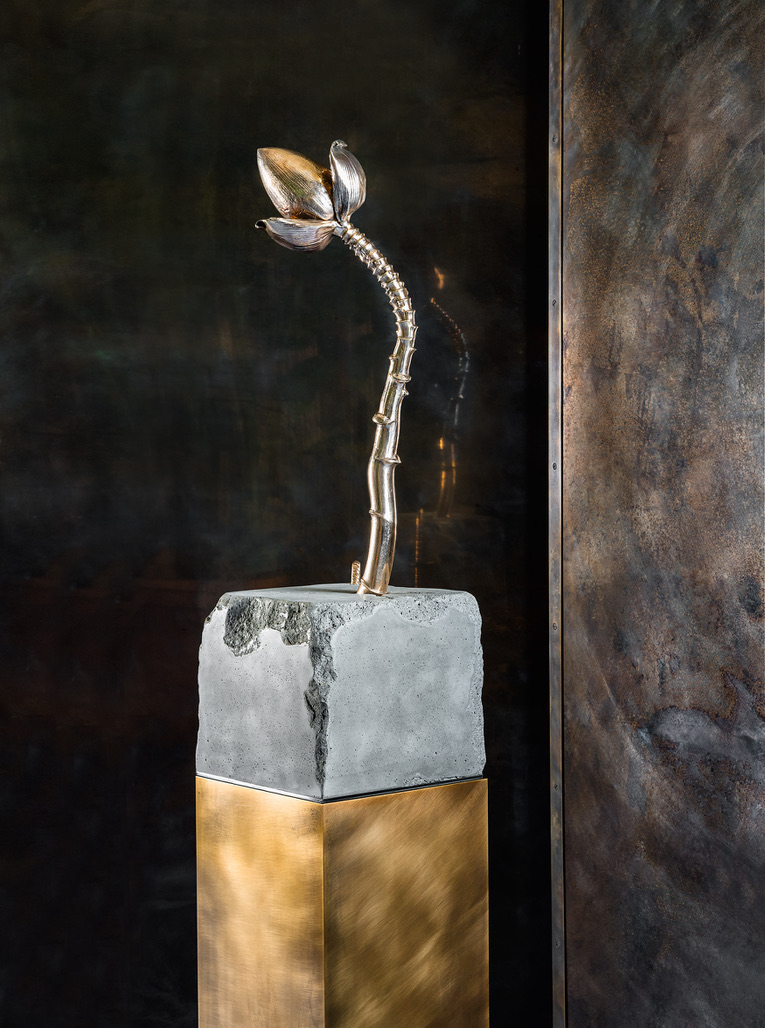

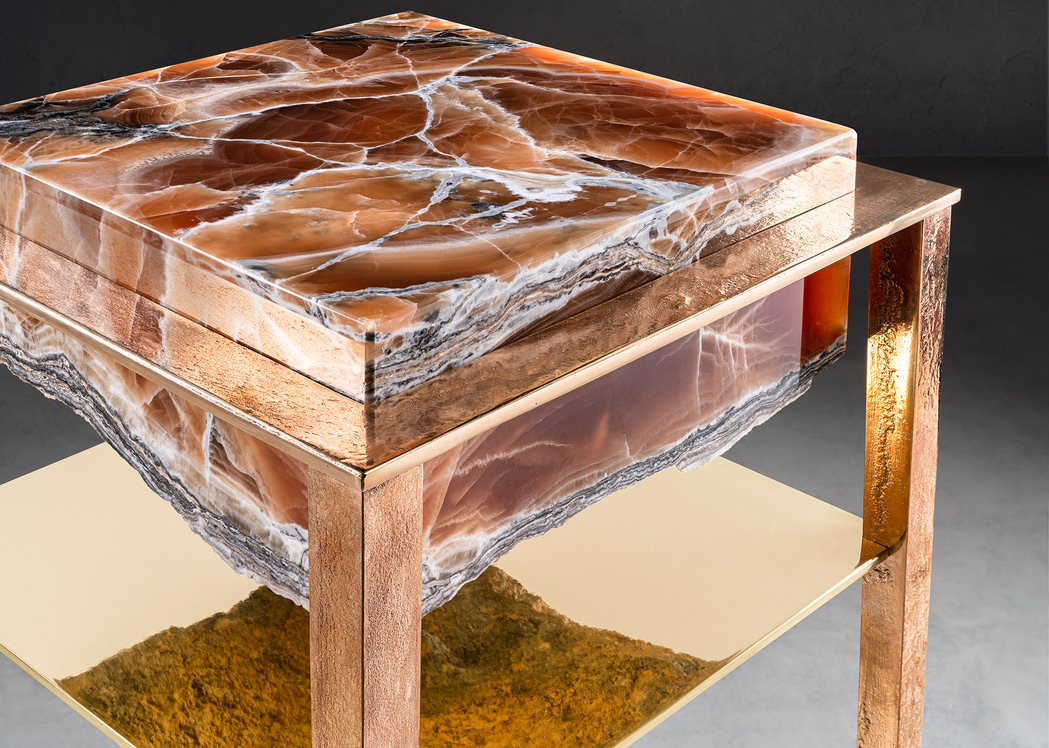

Whimsy and wonder
From unrefined ceramic works to cartoonish objets d’art, the playfulness and whimsy seems to be stronger than years past, begging the question as to whether this is a response to the weightiness of the global pandemic. Patrick Parrish Gallery presented new wool creations by New-York based artist Liam Lee. The artist explores the inherent flexibility of wool, presenting complex forms which are also bright, bulbous and exuberant.
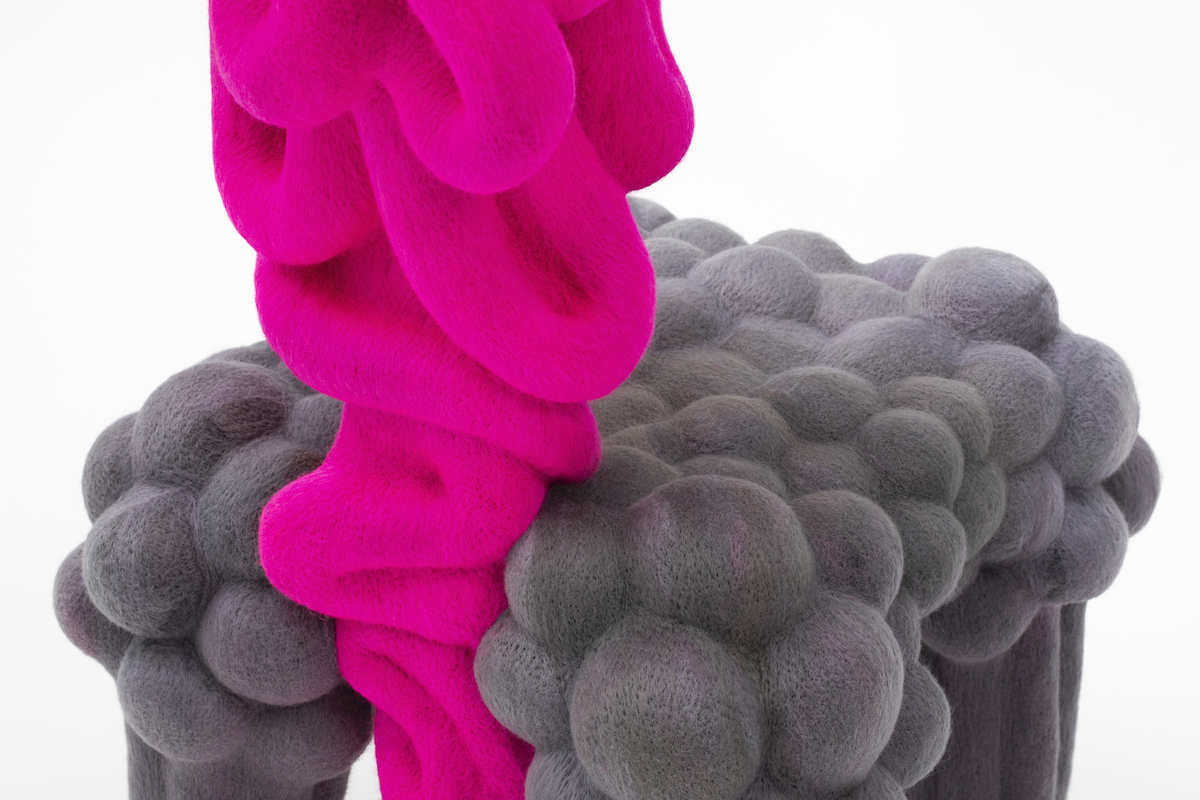

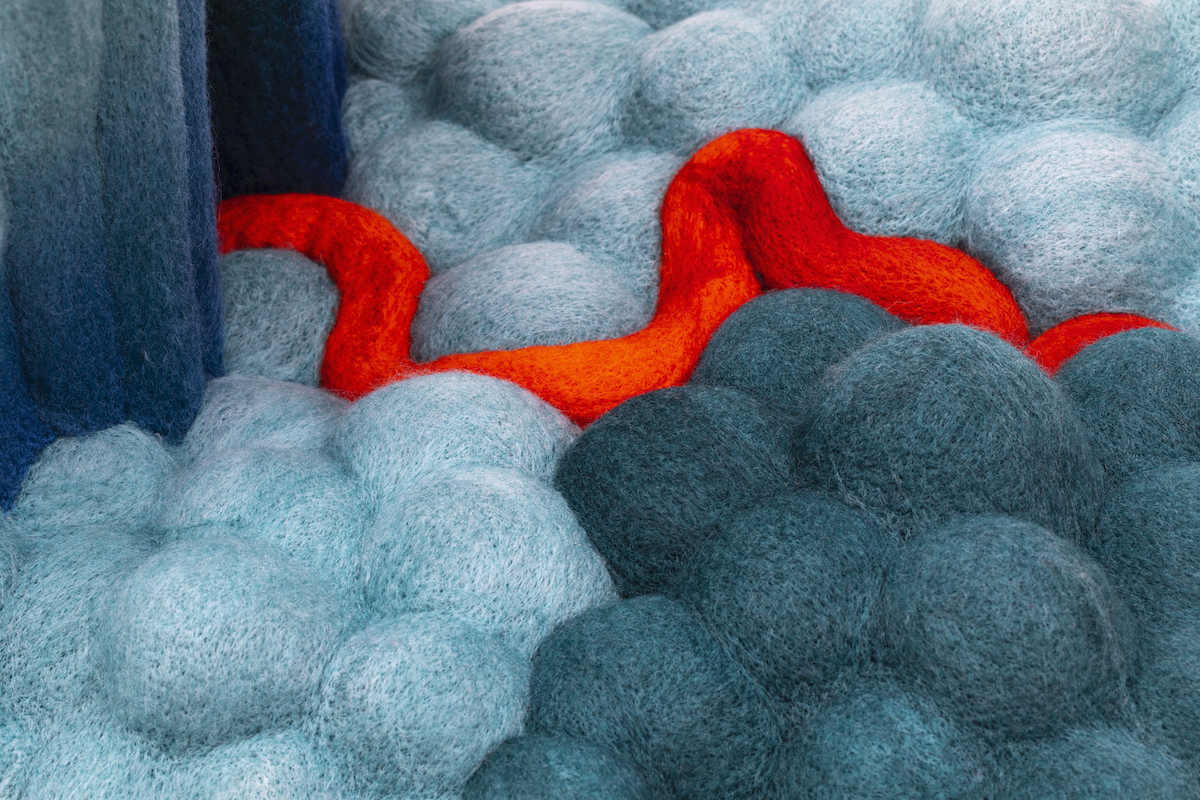
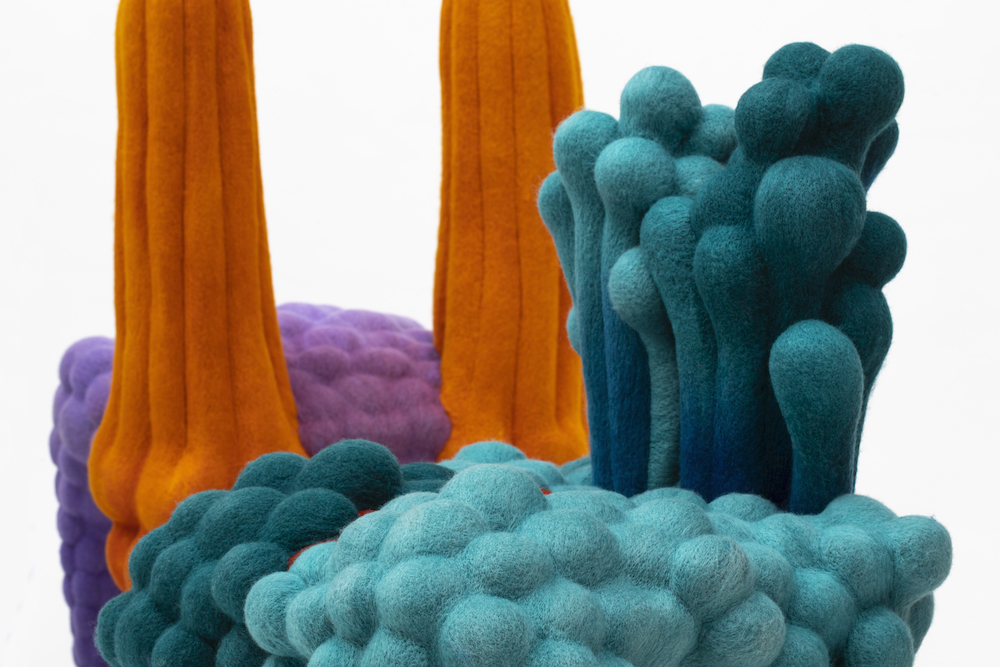
Maison Gerard surprised salon visitors with a selection of sustainable furniture from Stacklab Design, the Toronto-based practice founded by Jeff Forrest, which is guided by a design philosophy of “turning waste into wonders”.
In the Stackable collection, a team of six distinguished designers transform leftover materials salvaged from the local manufacturing industry into stackable pieces of furniture in multitudes of colorways. R and Company, renowned for championing extraordinary collectible design, upped the ante with a large-scale bronze sculpture by Studio Job. The Weeping Lantern, described as “whimsical yet despondent,” was in fine company among other extraordinary (and playful) works by Serban Ionescu, Rogan Gregory, Ummmsmile’s Katie Stout and Jeff Zimmerman.

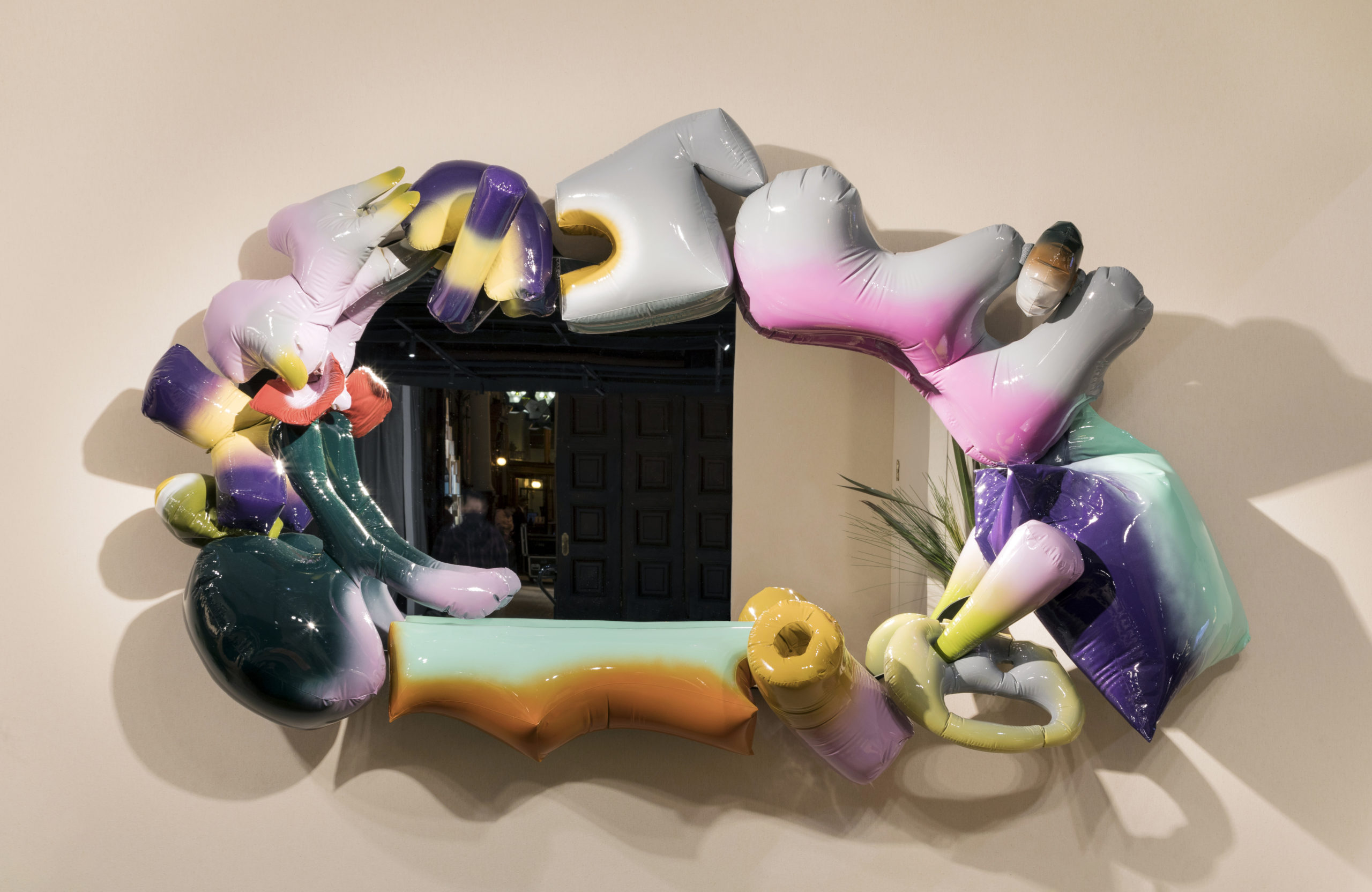
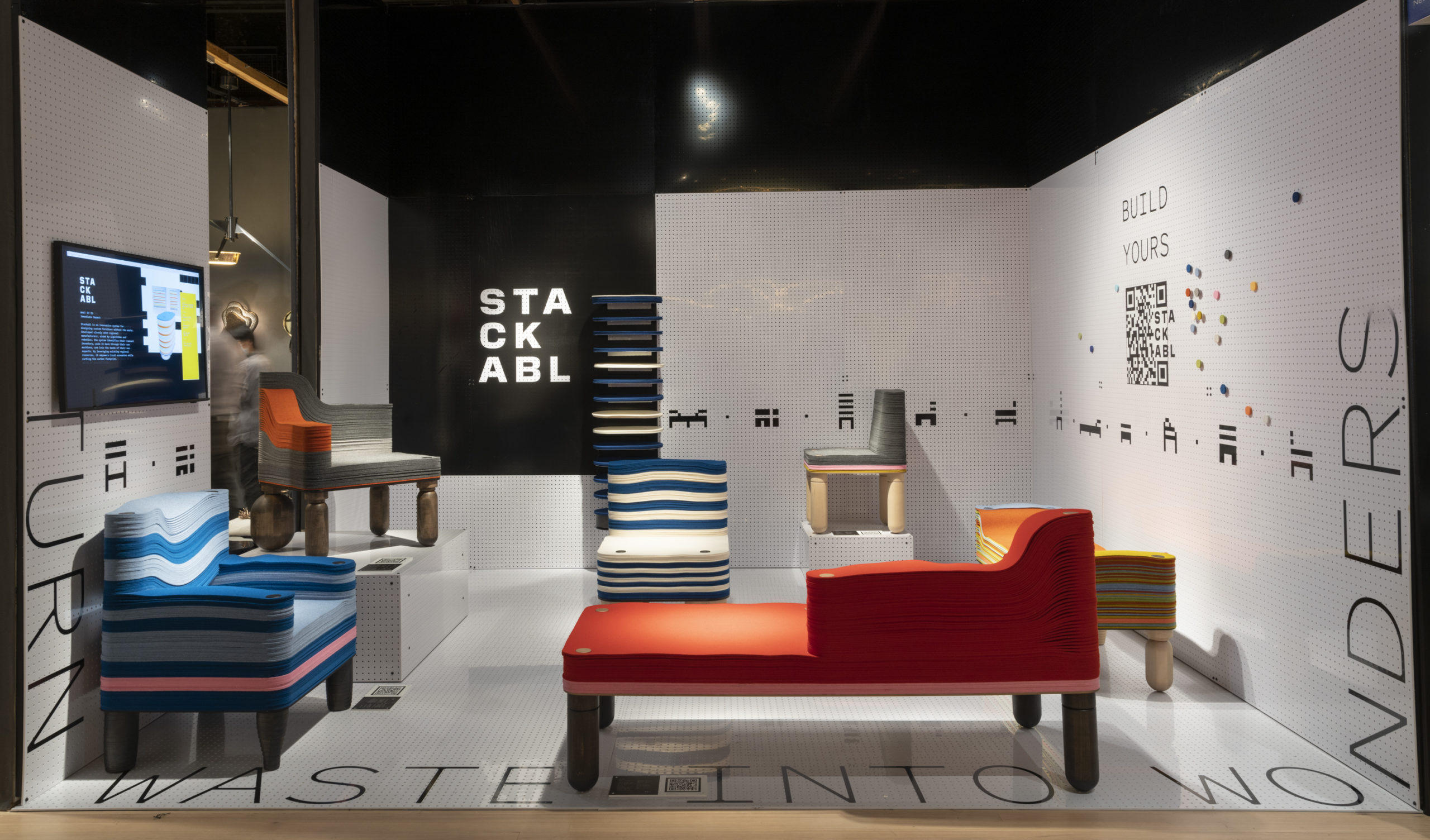
Friedman Benda’s booth also showcased whimsy with pieces from John Souter, Chris Schanck (Stuffed Shell Chair), Faye Toogood (Maquette 082), Barbora Žilinskaitė (Storyteller) and the absolutely striking Courtier mirror by Misha Kahn (above).
Reinventing process
This year’s show included work that pushed the boundaries of material possibility, presenting techniques and philosophies that will no doubt extend an influence on the broader design community.
Hostler Burrows showcased objects by Bjørn Friborg (top), a glass artist who “defies historical methods of making, and reinvents process with a dramatically physical approach that pushes the limits of material and technique, and is as much a performance as it is a means to an end.” Gallerist Liz O’Brien’s booth featured a bronze table lamp, with Japanese paper shade from Studio Palatin. The artist Barbara Palatin-Doyle explains: “It is wireless and rechargeable. I tried to combine traditional craftsmanship, sculpture and new technology.”
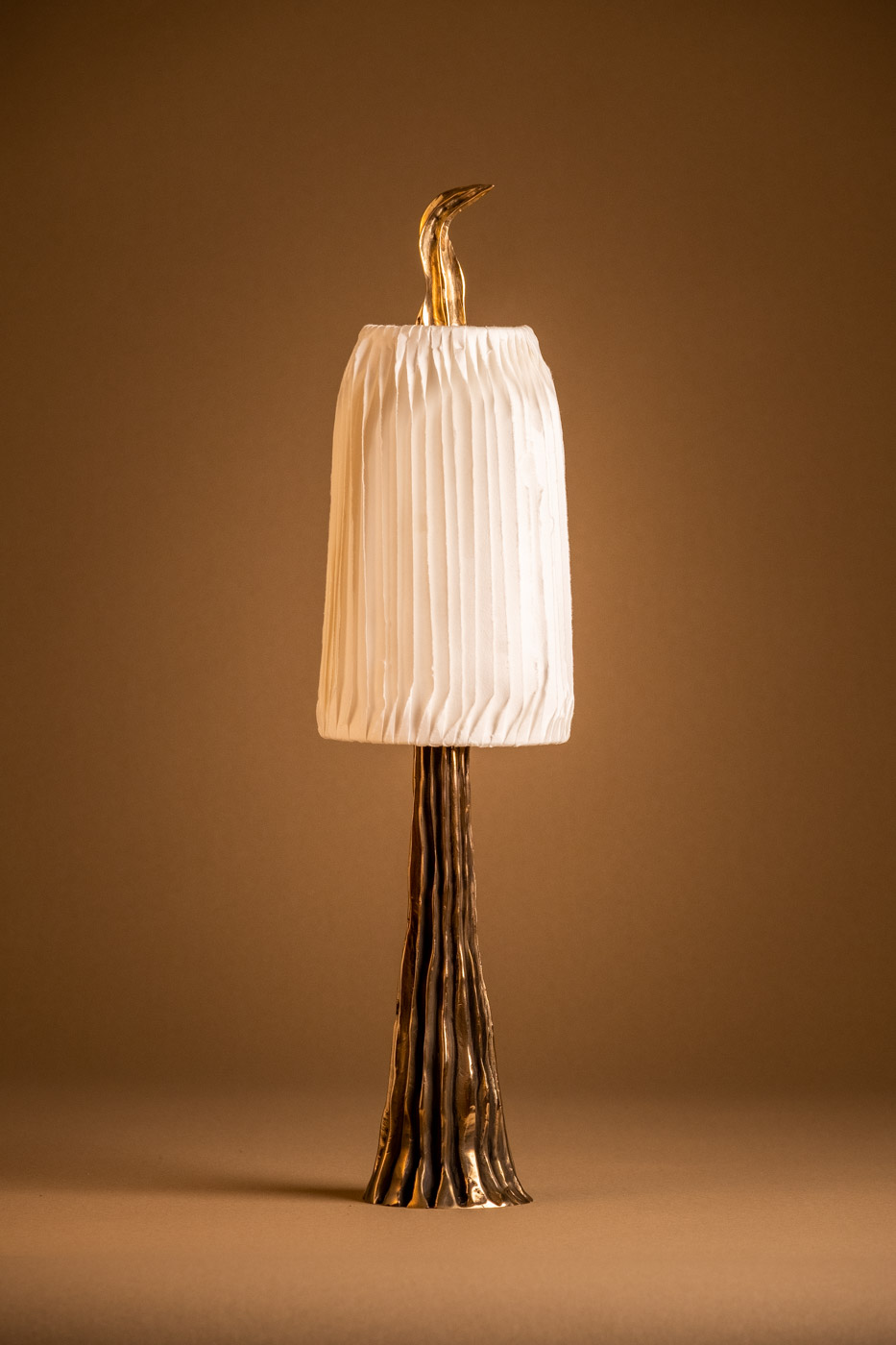
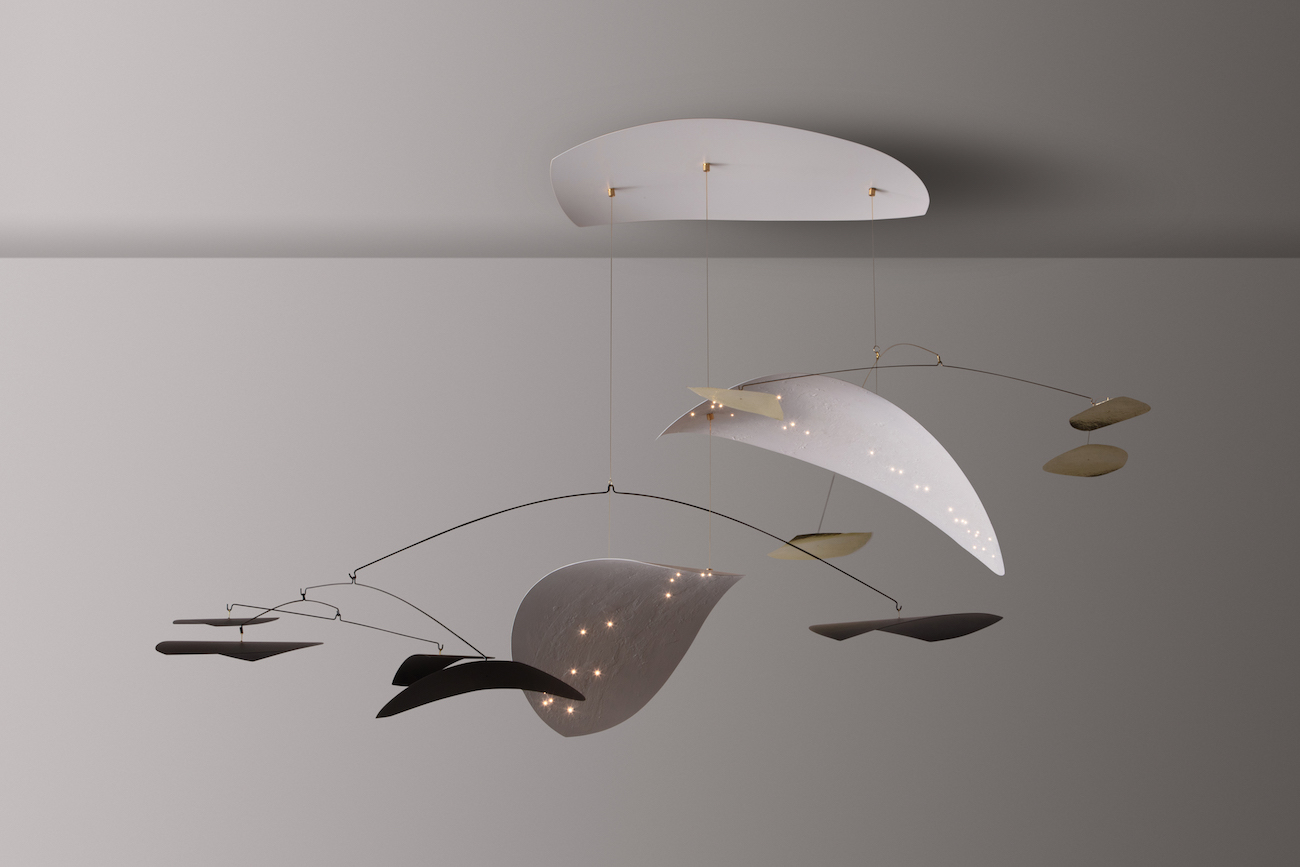

The Future Perfect unveiled works by a trio of pioneering designers. Sculptor Ian Collings unveiled his largest body of work to date, which investigates the designer’s exploration of stone and wood. The works were joined by avant-garde Brooklyn-based design studio Chen Chen & Kai Williams. “The duo’s wildly popular geo series assembles contrasting materials in a cohesive, fluid environment,” explains the gallery. “Crafted from silver nitrate solution on clear glass, incorporating a diversity of stones, these mirrors visualize the fragility of a chemical transition with technical mastery and beauty.”
Dynamic and innovative illuminated sculptures by Karl Zahn, which incorporate a coating of microscopic electrical lights within a minimalist construction, rounded out their presentation. “Karl Zahn’s chandelier left many visitors asking how an illuminated work like this is even possible,” said Future Perfect co-founder Laura Young; “and while I’m still piecing together the mechanics myself, there’s no question that it is truly magical and beyond stunning.”
Effect Magazine is brought to you by Effetto



